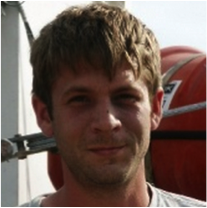Determining ocean salinity trends is not a simple task. With differences in the amount of water, heat, and salt constantly coming and going, as well as gradients across depth and latitude, it's a challenging task to undertake. Dr. Farrar shares what data from a fixed mooring within the SPURS area can tell us about the overall "salt budget" for one of the saltiest parts of the world's ocean. His story includes describing the nerve-wracking process of deployment and recovery of the mooring, as well as how data from the buoy can work in conjunction with satellite data to produce a more complete picture of the ocean's "salt budget".

Click
here for a transcript of the Q&A portion of this video (PDF, 77 KB).
Concept Map

Concept map developed for this webinar by Dr. Tom Farrar.
Dr. Farrar's concept map illustrates the diversity of measurements that can be gathered from one platform and how those measurements can inform the greater salt budget.
The different instruments measuring heat, freshwater and current movement are showcased.
Applicable Next Generation Science Standards
Disciplinary Core Idea
Variations in density due to variations in temperature and salinity drive a global pattern of interconnected ocean currents (MS-ESS2-6).
Interdependence of Science, Engineering, and Technology
Crosscutting Concept: Scientific discoveries about the natural world can often lead to new and improved technologies, which are developed through the engineering design process (3-PS2-4).
- [3-PS2-4] Define a simple design problem that can be solved by applying scientific ideas about magnets.
Resources
About the Presenter
Balanced Budget? Oh, Buoy!
Presented by Dr. Tom Farrar - October 1, 2013
Dr. Tom Farrar is an Associate Scientist at Woods Hole Oceanographic Institution.
His research interests include air-sea interaction and exchange; dynamics and thermodynamics of the upper ocean; tropical dynamics and equatorial waves; oceanic internal waves and eddies; satellite oceanography; and ocean observing and instrumentation.
These interests are pursued from an observational perspective using
in situ observations, satellite observations, and, in some cases, laboratory and numerical models to test hypotheses and test or formulate simplified physical models that aid understanding.


